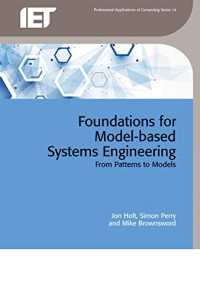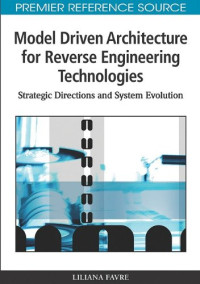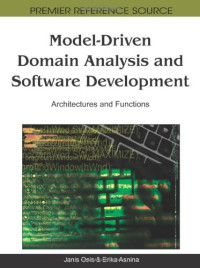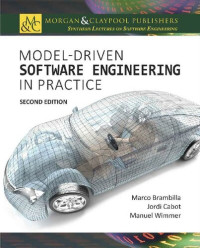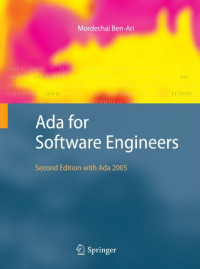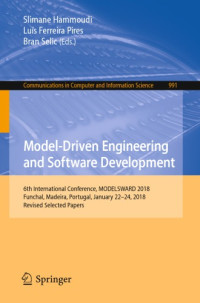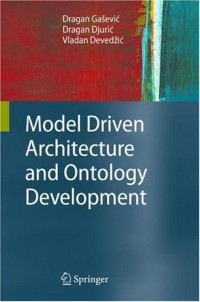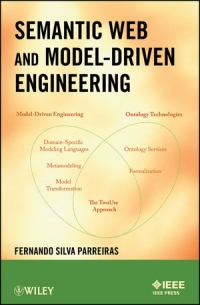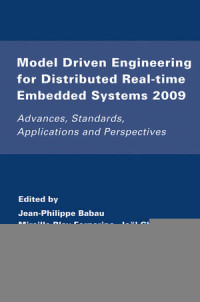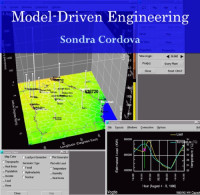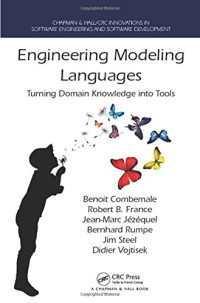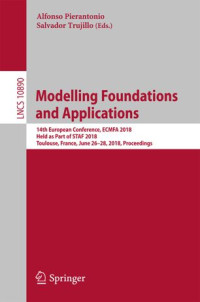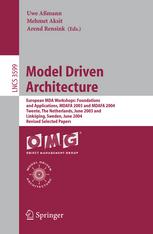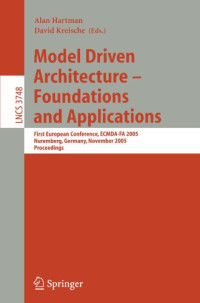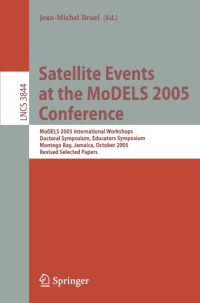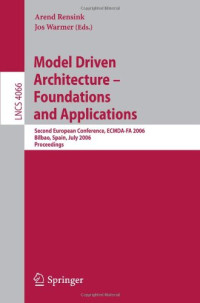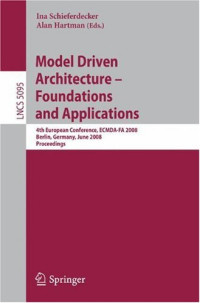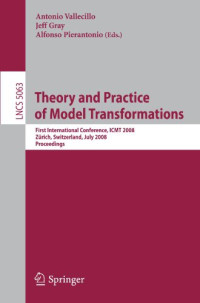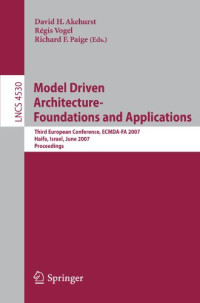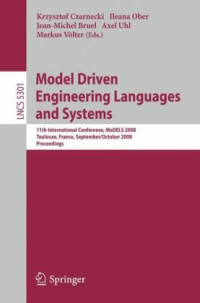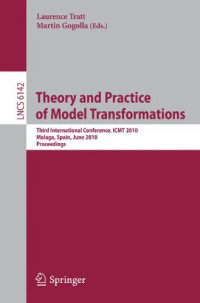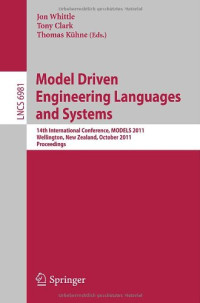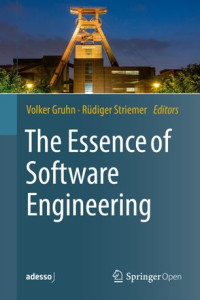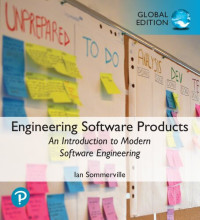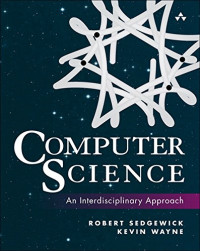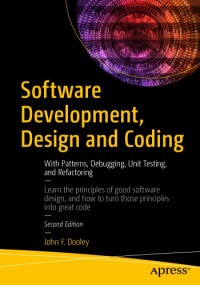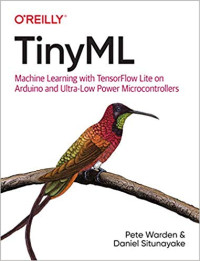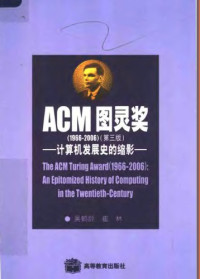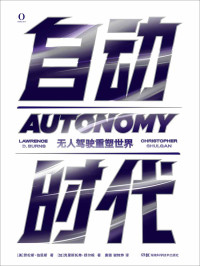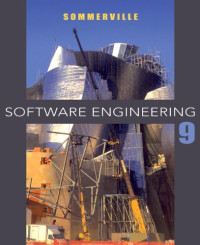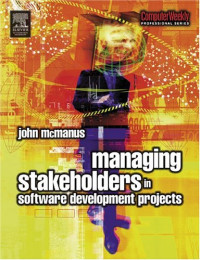
Model-driven software engineering in practice
Marco Brambilla, Jordi Cabot, Manuel Wimmer
This book discusses how model-based approaches can improve the daily practice of software professionals. This is known as Model-Driven Software Engineering (MDSE) or, simply, Model-Driven Engineering (MDE). MDSE practices have proved to increase efficiency and effectiveness in software development, as demonstrated by various quantitative and qualitative studies. MDSE adoption in the software industry is foreseen to grow exponentially in the near future, e.g., due to the convergence of software development and business analysis.
Content: 1. Introduction --
1.1 Purpose and use of models --
1.2 Modeling for software development --
1.3 How to read this book --
2. MDSE principles --
2.1 MDSE basics --
2.2 Lost in acronyms: the MD* jungle --
2.3 Overview of the MDSE methodology --
2.4 MDSE adoption in industry --
2.5 Tool support --
2.6 Criticisms of MDSE --
3. MDSE use cases --
3.1 Automating software development --
3.2 System interoperability --
3.3 Reverse engineering --
4. Model-driven architecture (MDA) --
4.1 MDA definitions and assumptions --
4.2 The modeling levels: CIM, PIM, PSM --
4.3 Mappings --
4.4 General-purpose and domain-specific languages in MDA --
4.5 Architecture-driven modernization --
5. Integration of MDSE in your development process --
5.1 Introducing MDSE in your software development process --
5.2 Traditional development processes and MDSE --
5.3 Agile and MDSE --
5.4 Domain-driven design and MDSE --
5.5 Test-driven development and MDSE --
6. Modeling languages at a glance --
6.1 Anatomy of modeling languages --
6.2 General-purpose vs. domain-specific modeling languages --
6.3 General-purpose modeling: the case of UML --
6.4 UML extensibility: the middle way between GPL and DSL --
6.5 Overview on DSLs --
6.6 Defining modeling constraints (OCL) --
7. Developing your own modeling language --
7.1 Metamodel-centric language design --
7.2 Example DSML: sWML --
7.3 Abstract syntax development --
7.4 Concrete syntax development --
8. Model-to-model transformations --
8.1 Model transformations and their classification --
8.2 Exogenous, out-place transformations --
8.3 Endogenous, in-place transformations --
8.4 Mastering model transformations --
9. Model-to-text transformations --
9.1 Basics of model-driven code generation --
9.2 Code generation through programming languages --
9.3 Code generation through M2T transformation languages --
9.4 Mastering code generation --
9.5 Excursus: code generation through M2M transformations and TCS --
10. Managing models --
10.1 Model interchange --
10.2 Model persistence --
10.3 Model comparison --
10.4 Model versioning --
10.5 Model co-evolution --
10.6 Global model management --
10.7 Model quality --
10.7.1 Verifying models --
11. Summary --
Bibliography --
Authors' biographies.
Abstract: This book discusses how model-based approaches can improve the daily practice of software professionals. This is known as Model-Driven Software Engineering (MDSE) or, simply, Model-Driven Engineering (MDE). MDSE practices have proved to increase efficiency and effectiveness in software development, as demonstrated by various quantitative and qualitative studies. MDSE adoption in the software industry is foreseen to grow exponentially in the near future, e.g., due to the convergence of software development and business analysis
Content: 1. Introduction --
1.1 Purpose and use of models --
1.2 Modeling for software development --
1.3 How to read this book --
2. MDSE principles --
2.1 MDSE basics --
2.2 Lost in acronyms: the MD* jungle --
2.3 Overview of the MDSE methodology --
2.4 MDSE adoption in industry --
2.5 Tool support --
2.6 Criticisms of MDSE --
3. MDSE use cases --
3.1 Automating software development --
3.2 System interoperability --
3.3 Reverse engineering --
4. Model-driven architecture (MDA) --
4.1 MDA definitions and assumptions --
4.2 The modeling levels: CIM, PIM, PSM --
4.3 Mappings --
4.4 General-purpose and domain-specific languages in MDA --
4.5 Architecture-driven modernization --
5. Integration of MDSE in your development process --
5.1 Introducing MDSE in your software development process --
5.2 Traditional development processes and MDSE --
5.3 Agile and MDSE --
5.4 Domain-driven design and MDSE --
5.5 Test-driven development and MDSE --
6. Modeling languages at a glance --
6.1 Anatomy of modeling languages --
6.2 General-purpose vs. domain-specific modeling languages --
6.3 General-purpose modeling: the case of UML --
6.4 UML extensibility: the middle way between GPL and DSL --
6.5 Overview on DSLs --
6.6 Defining modeling constraints (OCL) --
7. Developing your own modeling language --
7.1 Metamodel-centric language design --
7.2 Example DSML: sWML --
7.3 Abstract syntax development --
7.4 Concrete syntax development --
8. Model-to-model transformations --
8.1 Model transformations and their classification --
8.2 Exogenous, out-place transformations --
8.3 Endogenous, in-place transformations --
8.4 Mastering model transformations --
9. Model-to-text transformations --
9.1 Basics of model-driven code generation --
9.2 Code generation through programming languages --
9.3 Code generation through M2T transformation languages --
9.4 Mastering code generation --
9.5 Excursus: code generation through M2M transformations and TCS --
10. Managing models --
10.1 Model interchange --
10.2 Model persistence --
10.3 Model comparison --
10.4 Model versioning --
10.5 Model co-evolution --
10.6 Global model management --
10.7 Model quality --
10.7.1 Verifying models --
11. Summary --
Bibliography --
Authors' biographies.
Abstract: This book discusses how model-based approaches can improve the daily practice of software professionals. This is known as Model-Driven Software Engineering (MDSE) or, simply, Model-Driven Engineering (MDE). MDSE practices have proved to increase efficiency and effectiveness in software development, as demonstrated by various quantitative and qualitative studies. MDSE adoption in the software industry is foreseen to grow exponentially in the near future, e.g., due to the convergence of software development and business analysis
카테고리:
년:
2012
출판사:
Morgan & Claypool
언어:
english
페이지:
184
ISBN 10:
1608458830
ISBN 13:
9781608458837
시리즈:
Synthesis lectures on software engineering, #1
파일:
PDF, 5.52 MB
IPFS:
,
english, 2012
 Amazon
Amazon  Barnes & Noble
Barnes & Noble  Bookshop.org
Bookshop.org  파일을 변환하실 수 있습니다
파일을 변환하실 수 있습니다  더 많은 검색 결과
더 많은 검색 결과 기타 혜택
기타 혜택 

